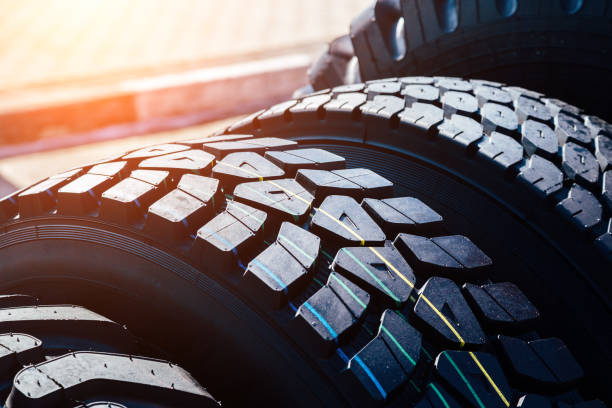
Clean new modern truck tire. Close up view of surface.
Using a vehicle means coming to terms with the fact that in addition to all-time availability and use, comes the pressure of maintenance and upkeep. To ensure maximum performance and efficiency, one needs to make timely maintenance to their car, the only question that remains is the period at which your vehicle should be maintained.
While a full car service can be conducted post every six months, the maintenance of the components needs to be much more prompt and regular. Let’s take tyres for example; at least a week one should scrutinise their Yokohama Tyres Watford for a visual inspection. This ensures that the owner of the vehicle can keep an eye on the inflation pressure, tread, and other damages.
Tyres are one of the most crucial components of the vehicle as they make sure your vehicle does not stop abruptly and maintain motion without an issue. However, over time, these tyres cannot perform as efficiently as they once did, this is mainly due to age and other factors that may include damage, tyre wear and neglect. The most common kinds of damages that can incur upon the tyres are bulges, cracks, cuts and so on. To avoid the same, constant maintenance is needed but cannot always be followed through.
Why Does Treadwear Occur?
As your tyres, along with your vehicles start to age, the rubber over it or the tread that comes in contact with the surface of the road, begins to wear, ergo, treadwear.
Tyre tread wear is a gradual and slow process that happens over time. When tyres are purchased, they have a tyre tread depth of about 8mm but slowly this depth reduces to about one point six millimetres.
It is important to constantly check the tread depth as it can wear unevenly. The tyre tread depth is a crucial component of your tyres and determines how well it will perform, any tyre depth under 2mm is considered dangerous and it is unsafe to drive around in such tyres. Moreover, one is liable to pay a fine if they drive in tyres with a tread depth lesser than 1. mm
Reasons for Early and Irregular Treadwear
There is no doubt that the driving habits of different drivers are unique to them, coupled with the difference in tyres and the rate at which they wear, tyre tread wear can differ. Treadwear can also be uneven, most commonly an uneven tyre tread wear is because of the rate at which they are driven.
The tyres on the front axle wear out a lot faster than the tyres on the rear axle leading to uneven tyre tread wear. High-performance tyres happen to wear out a lot faster than a regular set of tyres. Other than this, many reasons can be attributed to early tyre tread wear such as:
Improper Inflation Pressure
A tyre that has not been inflated properly will wear out faster and unevenly too. All vehicle manufacturers provide the minimum level of inflation pressure required by vehicles on the owner’s vehicle manual. However, the same is not followed through by most drivers which leads to such consequences.
A tyre that is properly inflated will provide enough comfort during the ride, handling and even minimise tyre tread wear. Moreover, well-inflated tyres provide proper fuel economy so even the worry of excess fuel use is saved. By inflating the tyres properly, there is an even distribution of the load of the vehicle, acceleration and braking. The tyre pressure will have a direct effect on the contact it makes with the road therefore, the tyre tread would vary.
Wheel Alignment:
Bad wheel alignment is to make sure that angles at which the tyres come in contact with the road match the specifications for camber, toe and caster. If the wheel alignment is off, the Car Tyres Watford tend to wear unevenly and prematurely.







